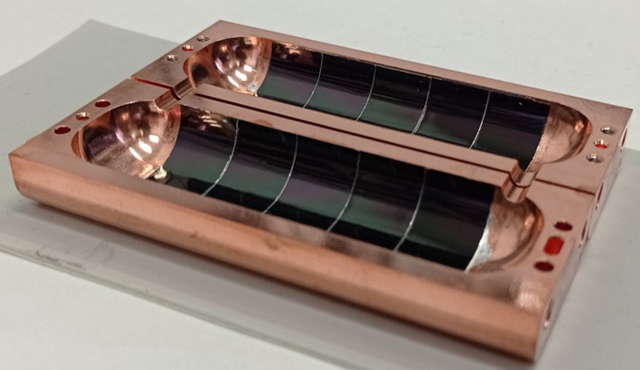ED3-5
REBCO surface coatings for enhanced Cold Dark Matter detectors
*Neil Lamas1, Guilherme Telles1, Artur Romanov1, Jessica Golm2, Babette Dobrich2, Walter Wuensch2, Sergio Calatroni2, Xavier Granados1, Joffre Gutierrez1, Teresa Puig1
- Institut de Ciencia de Materials de Barcelona, Spain1
- European Organization for Nuclear Research (CERN), Switzerland2
The search for the axion has recently become an intense research field, as this hypothetical elementary particle, postulated by the Peccei–Quinn theory in 1977, can single-handedly solve two mysteries in physics. It could resolve the strong CP problem in quantum chromodynamics, and be the constituent of the dark matter that fills 27% of the universe.
In the presence of a magnetic field, the axion may decompose into a photon through the strong force interaction. The resulting photon will have a frequency proportional to the mass of the axion. Since the mass of the axion is unknown, and can span several orders of magnitude, a myriad of experiments world-wide are probing different axion mass ranges. The RADES project uses a haloscope [1] to search for axions with a mass in the range of the tens of meV (cold dark matter). The haloscope is a resonant cavity that can detect an axion produced photon with nres = ng (≈8 GHz inthe RADES case), with a detection efficiency that goes as P a QBe2, where Q is the quality factor of the cavity and Be the external applied magnetic field. Therefore, these cavities work at low temperatures (4.2K) and under very high Be. For this reason, haloscopes use copper instead of low temperature superconductor as a high conductance material to have low-surface resistance and hence a high in-field Q value.
We have demonstrated that under the working conditions of a haloscope, REBCO coated conductors (CCs) can outperform copper in terms surface resistance by a factor of 5 or more [2,3]. In this work we present a method to coat haloscopes, including curved surface cavities, that can use any CC in the market. The first cavity coated within our collaboration with RADEs has yielded a larger-than-copper Q value at high magnetic fields. We will also show that we are in the position to further improve the Q factor of the future cavities, potentially achieving a Q-factor 5 times that of a Cu cavity. Finally, we explore the advantages and pitfalls of using REBCO on cavities operating at lower frequencies than that of the RADES project.
[1] P. Sikivie, PRL 51 1983
[2] Puig T, et al Supercond. Sci. Technol. 32 2019
[3] Romanov A, et al Sci. Rep. 10 2020
Figure caption: Photo of the two halves of the axion cavity from RADES (CERN) after coating.
Keywords: REBCO, Coated conductors, Vortex dynamics, Dark matter
